
Europe is bracing for one of the most intense early-summer heatwaves in recent years, with meteorological models from the GFS 00Z run indicating unprecedented high temperatures at the 850 hPa level—a key atmospheric layer around 1,500 meters above sea level often used to forecast surface conditions. Forecasts show widespread 850 hPa temperatures ranging from 24°C to as high as 28°C over many parts of southern and central Europe, with surface temperatures expected to soar well above 40°C in some regions.
Atmospheric Setup Behind the Heat
The primary meteorological driver behind this heatwave is a persistent and powerful high-pressure ridge centered over continental Europe, stretching from the Iberian Peninsula through France, Germany, and into eastern Europe. This “omega block” effectively traps warm air over the continent and suppresses cloud formation and precipitation, allowing intense solar radiation to continuously warm the ground and lower atmosphere.
Additionally, dry spring conditions have significantly reduced soil moisture across much of southern and central Europe. This deficit reduces the ability of the land to cool itself through evapotranspiration, amplifying surface heating.
Based on the latest available data, here is a summary of the maximum 850 hPa temperatures forecasted over various European countries. By adding 17°C to these values, we can approximate the potential surface maximum temperatures (national TOPs = very rare occurrence) under sunny and well-mixed atmospheric conditions.
- Spain & Greece are forecast to experience surface temperatures around 45°C, especially in inland regions like Andalusia and Thessaly. These are values usually seen in mid-July, not early June.
- Italy, the Balkans, and France are also under serious heat threat, with temperatures ranging from 43°C to 44°C, particularly in the Po Valley, Serbia, and southern France.
- Central Europe, including Germany, Slovakia, and Hungary, is expected to see surface highs between 39°C and 41°C, which would be record-breaking for early June in these countries.
- Even traditionally milder countries like the UK and Scandinavia will not be spared. Forecasts point to 33–35°C days in southern Sweden and the southeast of England—values rarely seen at this time of year.
| Country | Max 850 hPa Temp (°C) | Approx. National Surface Temp (°C) |
|---|---|---|
| Spain | 28 | 45 |
| France | 26 | 43 |
| Italy | 27 | 44 |
| Germany | 24 | 41 |
| Slovakia | 22 | 39 |
| Poland | 21 | 38 |
| Hungary | 25 | 41 |
| United Kingdom | 18 | 35 |
| Scandinavia | 16 | 33 |
| Balkans | 27 | 44 |
| Greece | 28 | 45 |
Illustration picture: https://www.kayak.com/Podgora-Hotels-Medora-Auri-Family-Beach-Hotel.400889.ksp
Meteorological Drivers
This extreme setup is being driven by:
- A blocking high-pressure ridge over continental Europe, keeping skies clear and preventing air mass exchange.
- Dry spring conditions, reducing soil moisture and thus enhancing surface heating through reduced evaporation.
- Advection of hot air from North Africa and the eastern Mediterranean.
- Potential influence of a positive Atlantic Multidecadal Oscillation (AMO) phase, reinforcing heat transport toward Europe.
Outlook & Preparedness
With these values now appearing in operational models, there is increasing confidence that much of Europe is about to enter a dangerous heat period. The forecasts indicate not just high daytime temperatures, but also persistently warm nights, compounding health risks for vulnerable populations.
Governments, especially in southern and central Europe, are urged to:
- Prepare emergency cooling centers,
- Issue early heat warnings,
- Ensure hydration and support for the elderly,
- Monitor wildfire risks.

Conclusion:
This early June 2025 heatwave is shaping up to be one of the strongest in recent memory, with multiple countries facing 45°C-level extremes typically reserved for midsummer. The data confirms that what was once rare is rapidly becoming routine—a powerful signal of our shifting climate reality.
These forecasts indicate a significant heatwave event across Europe, with several countries potentially experiencing surface temperatures exceeding 40°C. Such conditions pose serious risks to public health, agriculture, and infrastructure. It’s crucial for residents and authorities in the affected regions to stay informed and take appropriate measures to mitigate the impacts of this extreme heat.
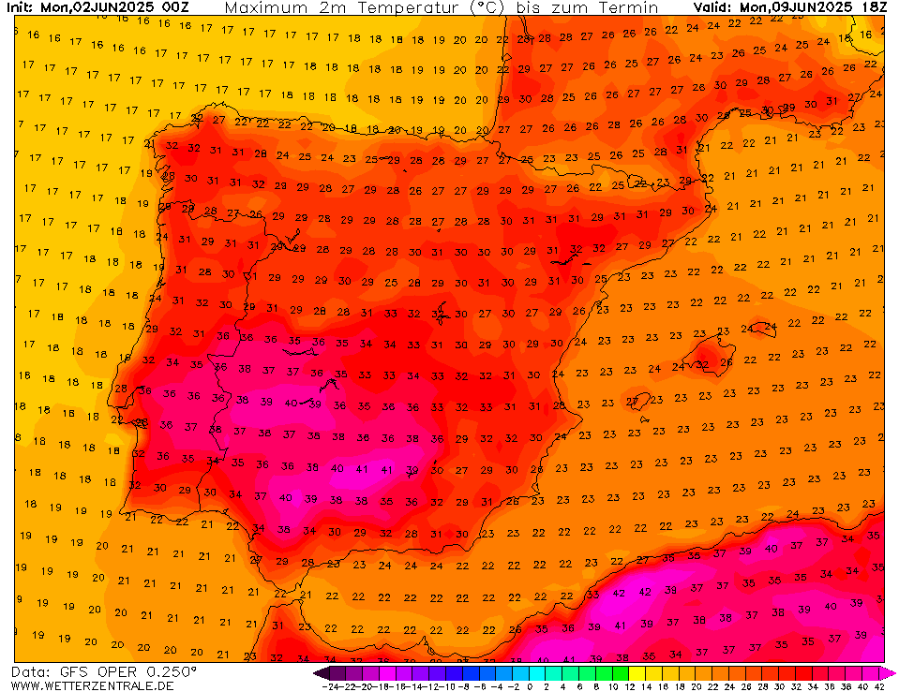
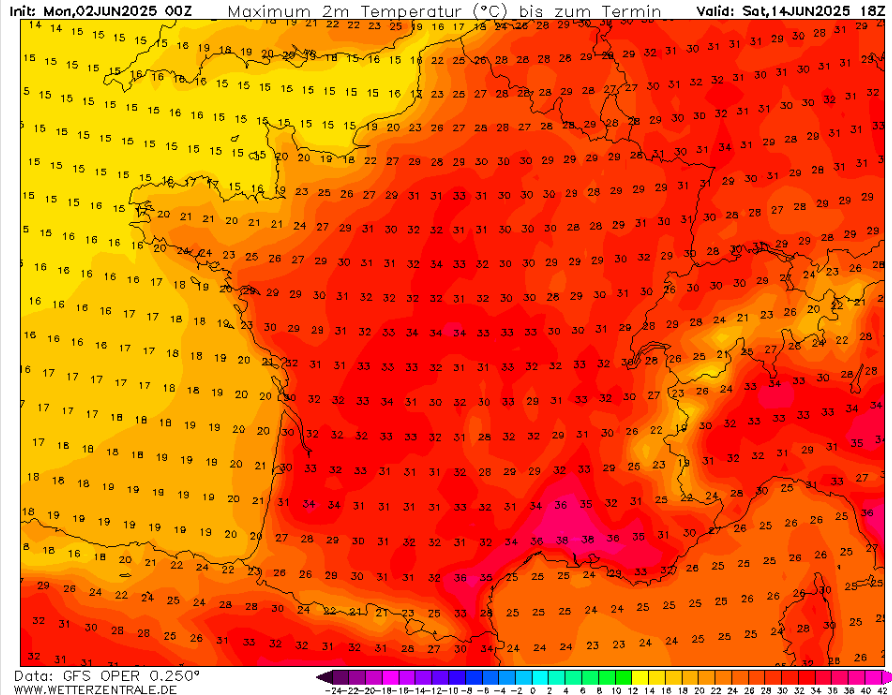
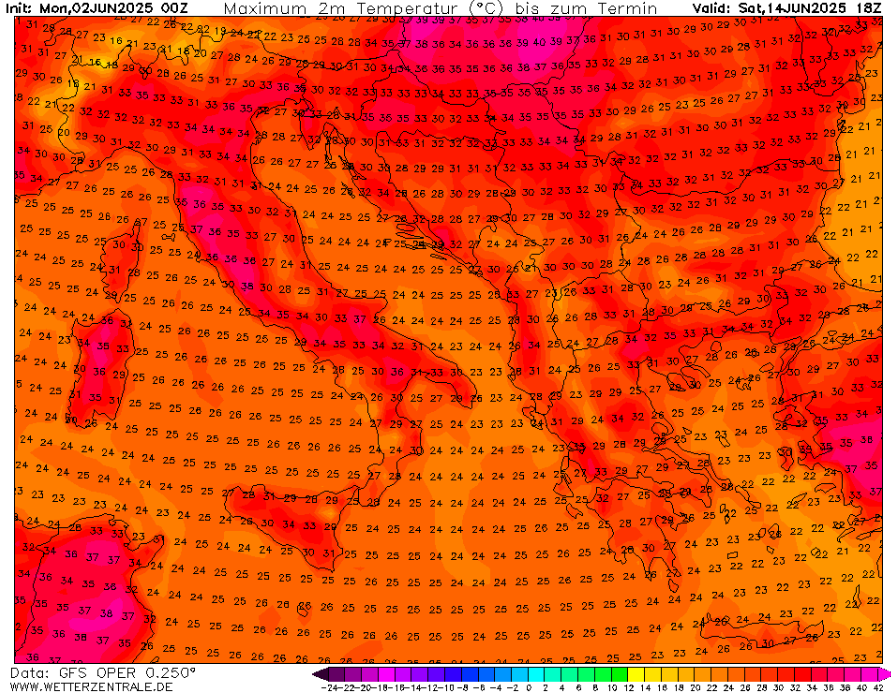

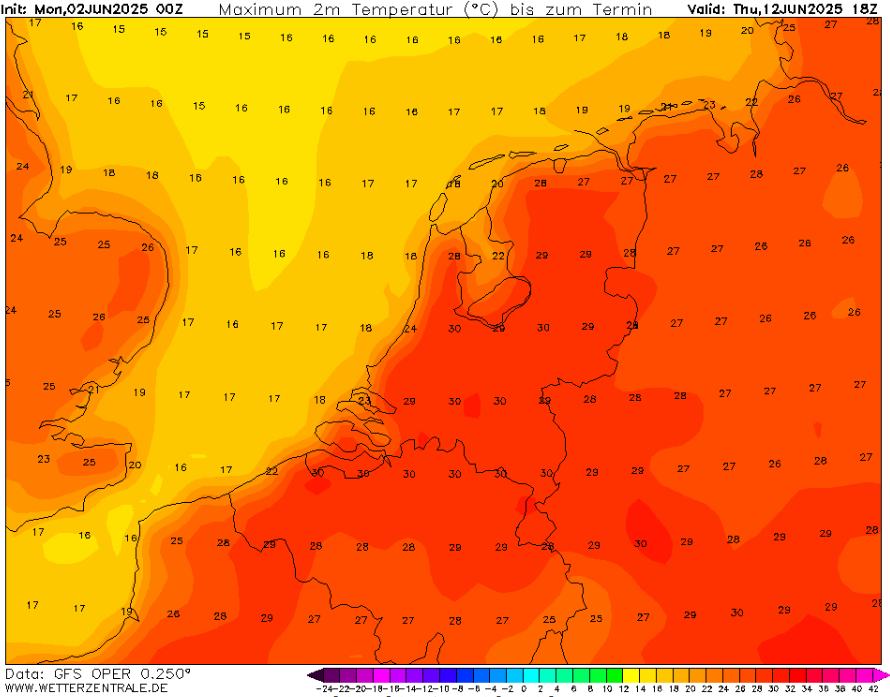
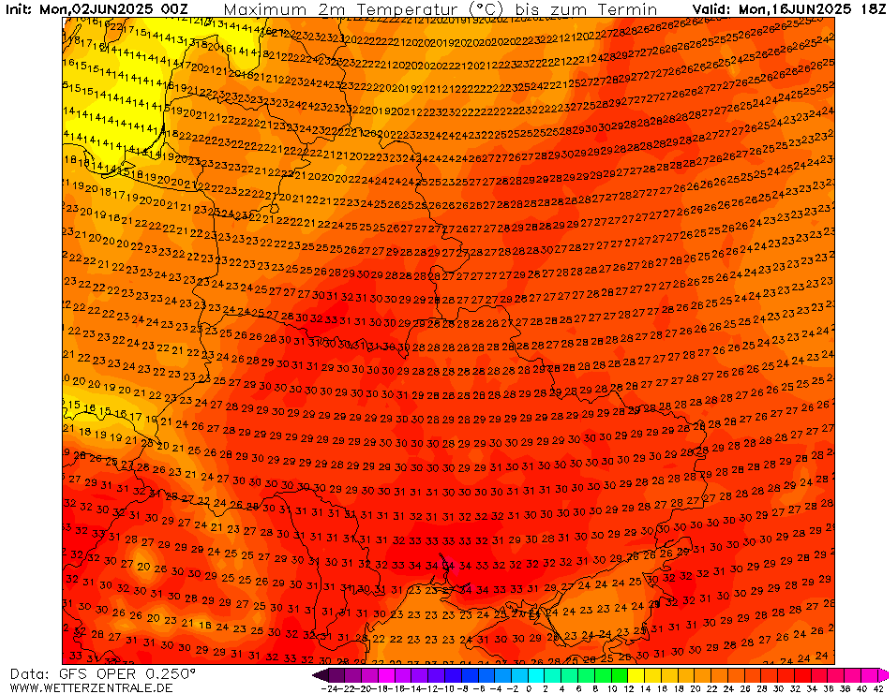
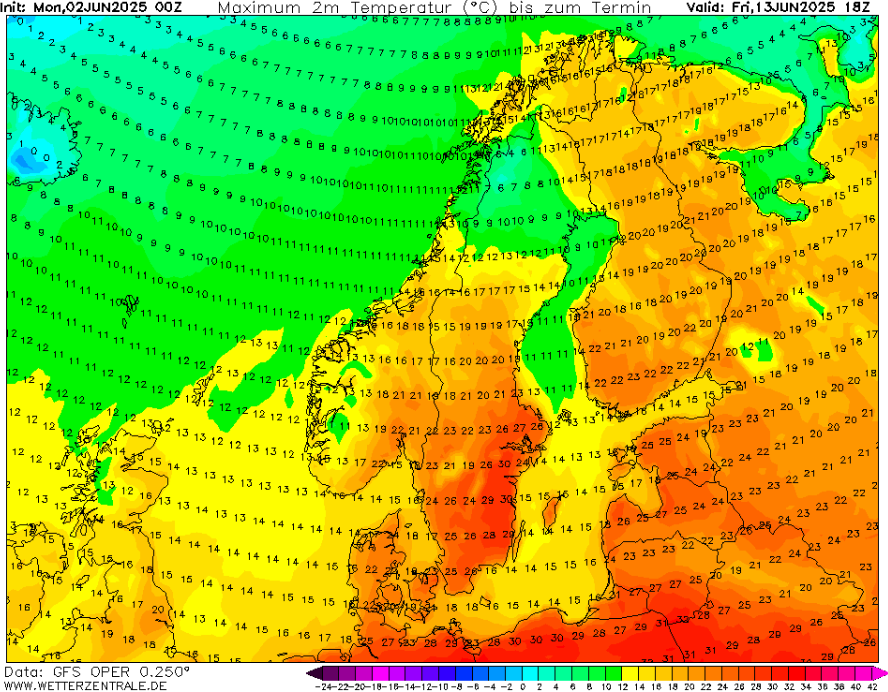
Source of GFS temperature forecasts: https://www.wetterzentrale.de/en/topkarten.php?model=gfs&lid=OP


























